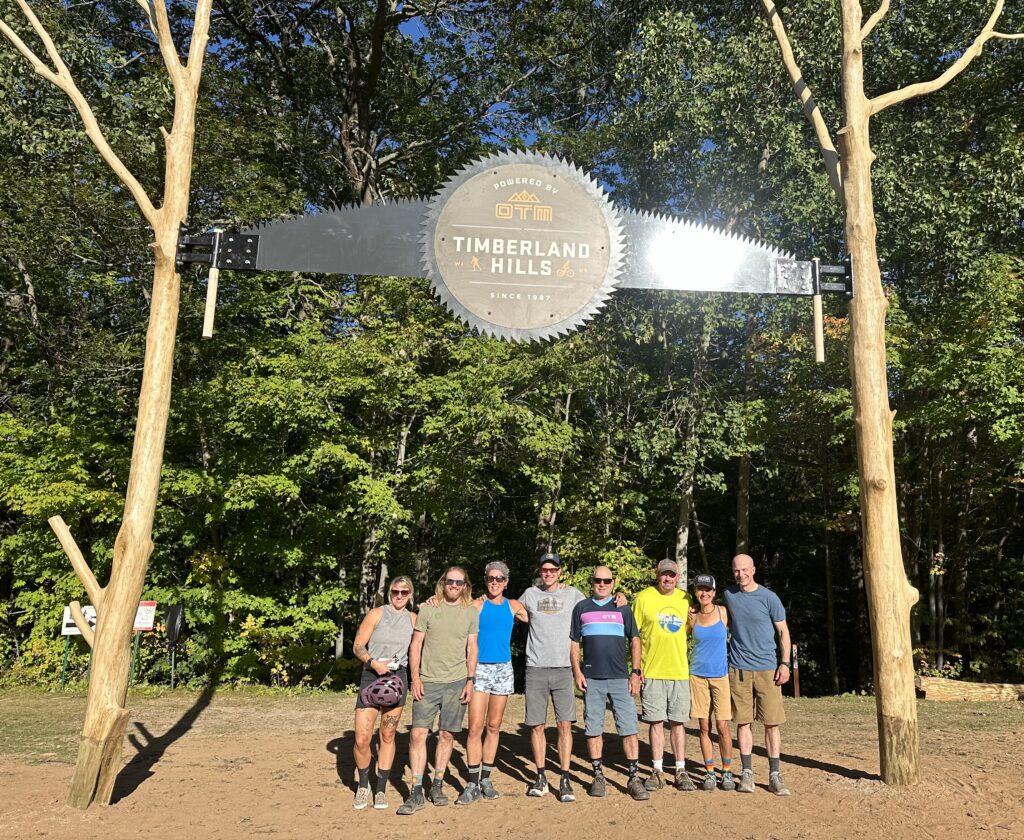One Track Mind is proud to partner with some of the most accomplished trail builders in the country. Each of our mountain bike trail projects comes to life through the vision and skill of expert trail builders. Over the past few years, we’ve been fortunate enough to work with Progressive Trail Design on builds across the country. Garrick Topp, owner of Topp Trails, has partnered with Progressive Trail Design on several One Track Mind projects. We caught up with Garrick to learn more about the art and science of trail building.
How long have you been building mountain biking trails?
I’ve been at it for ten years. Topp Trails has worked on projects in ten states, from California to Virginia.
How has trail building evolved over the course of your career?
The biggest evolution has been the type of equipment available. What’s possible as far as trail features has naturally grown along with this.
How have trails evolved along with the types of bikes that people are riding?
Trails have evolved quite a bit. There’s everything from high-speed, high-risk jumping flow trail to slow, technical, rocky climbing trail. You’re seeing more man-made features like bridges and lots and lots of imported or native rock being used on trails. The bikes have progressed a lot as well. Bike companies are always looking for something new with wheel size, suspension, and frame geometry to open up new types of riding.
Flow is a word that gets thrown around a lot… A LOT. In your own mind, what are some defining characteristics of good flow trails?
Flow is used a lot! Flow is the constant movement of trail with seamless transitions into different features, jumps, rollers, and berms throughout the trail. You can build a flow trail for the most beginner rider to the most advanced. Risk goes up with the level of riding.
What are some types of features that you particularly enjoy building?
My favorite type of trail features to build are intermediate to advanced flow trails with natural landings, rock, and features that match the topography of the land.
How do you pull off builds that are enjoyable for a range of riders?
Typically, we’ll build trails for different riding abilities by adding option lines with advanced features alongside trails that’s more approachable.
How does trail building balance art and science?
When building a trail, you have to visualize how the trail will look and ride before it’s built. During the build you need to adapt and use your artistic abilities to create a fun, yet sustainable trail using a design as a guideline, but always adapting to changes in the land.
How do you blend mountain bike trails into natural topography?
It’s important to always use the natural topography of the land to build trails. Not only does this create a great flowing trail, but it also helps with drainage and water control. Drainage is a crucial element in trail building. If you don’t have good drainage, you’ll have excessive erosion and washouts on trails.
As a rider, what are some characteristics of well-built trails that you notice and appreciate?
I appreciate a trail that flows naturally with the land, drains well, and has plenty of flowing features and option lines. Ultimately, it needs to be fun, fast, and progressive.
Thanks to Garrick for making time to share the in’s and out’s of his craft. Mountain biking trails have advanced tremendously over the past decade, and its builders like Garrick and the Progressive Trail Design team are leading the way to advance the sport. Ride on!


